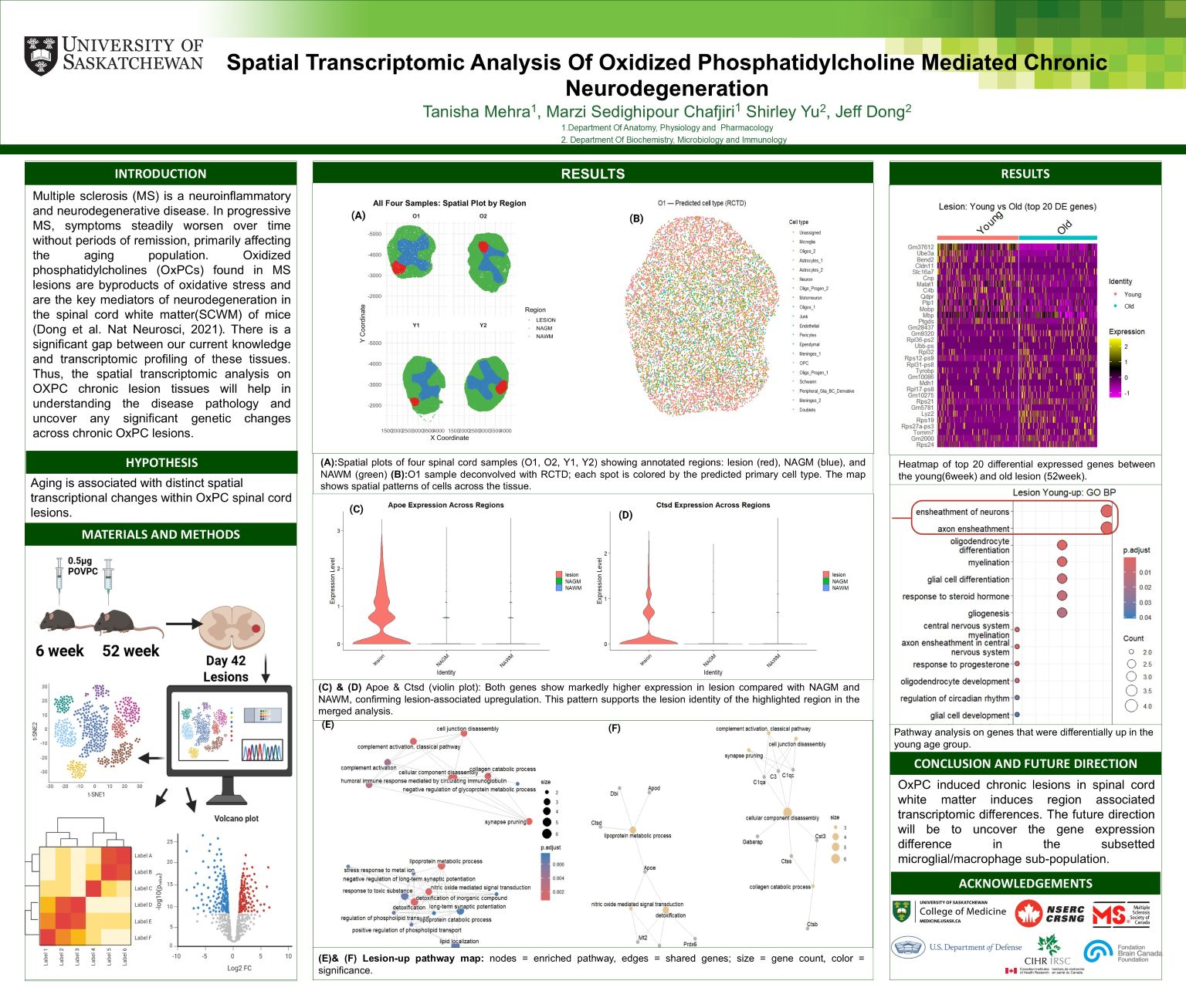
Spatial Transcriptomic Analysis Of Oxidized Phosphatidylcholine Mediated Chronic Neurodegeneration And Multiple Sclerosis
Tanisha Mehra
Multiple sclerosis (MS) is a chronic neuroinflammatory and neurodegenerative disease, with Saskatchewan having one of the highest prevalence rates in Canada. Aging is often associated with higher risk of developing progressive MS. Progressive-MS is characterized by continually worsening symptoms with no episode of relapses. The lesion in P-MS is characterized by an inactive lesion core surrounding by a radially active rim. There is no effective treatment for progressive-MS because the mechanism of lesion development remains relatively unclear. Previously, we demonstrated the accumulation of oxidized phosphatidylcholines (OxPCs), neurotoxic byproducts in oxidative stress, in the spinal cord white matter (SCWM) induces tissue pathology like human PMS lesions, thus providing a platform to investigate progressive disease mechanisms. Although spatial transcriptomic analysis has begun on human MS tissues, we specifically do not know how transcriptomic changes occur across an OxPC lesion. To address this gap of knowledge I analyzed day 42 spinal cord white matter lesion of young (6 week) and old mice (52 week) on Seurat platform. I found pathways associated with ensheathment of neurons to be upregulated in young as compared to the old lesion. My future plan is to look at changes in microglia/macrophage subset across the lesion.
